- 16-04-2019
- Category: Thư Viện
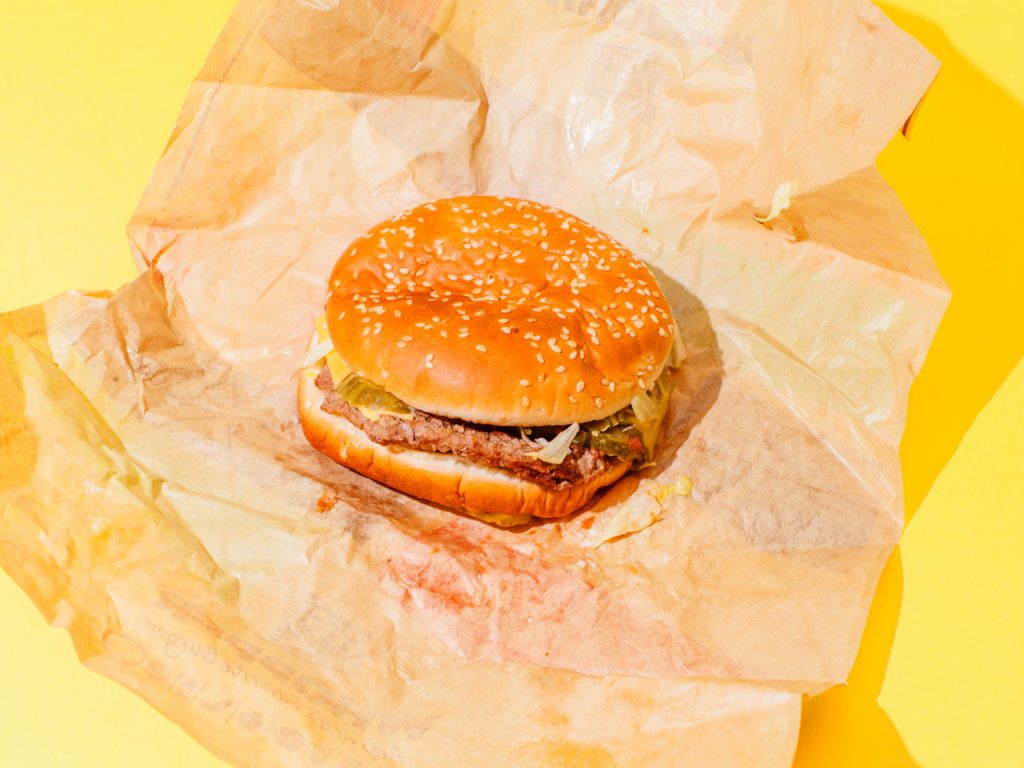
José Cil has two decades of expertise in the business of Burger King. Now, Cil is taking on Popeyes and Tim Hortons as well.
In January, Cil was named CEO of Restaurant Brands International, the parent company of Burger King, Tim Hortons, and Popeyes. Cil began working at Burger King in 2000, serving as Burger King’s president since 2014.
“We’ve got three amazing, iconic brands,” Cil told Business Insider. “They’re in kind of different stages of the journey. All three of them have huge potential for growth here in the home markets and internationally.”
Cil recently sat down with Business Insider for a far-reaching interview covering topics including his past experience, the chains’ expansion, and a more tech-focused future.
“The plans that we’re working on have been plans that I’ve been involved in developing since the beginning,” Cil said. “I’m excited. I wake up before the alarm.”
Here’s what Cil has to say about his mission and goals as the new CEO of Restaurant Brands International.
The following interview was edited for length and clarity.
Cil’s burger-filled background
José Cil: I started in 2000 at Burger King. I started as a lawyer, moved into operations in 2003. I spent about five and a half months in restaurants going through basic management training that anybody taking over a restaurant at Burger King would go through at the time: the food safety side of things, how to run a shift. I had a chance to learn all aspects of the business. It was a great experience to connect well with the team members and understand how the decisions and the things you do in the office, how they impact the team members.
Then I went to corporate roles in operations, in the US and internationally. I moved into Europe for my first international role as a general manager, was there for about three years, came back, and then left the company. I left the company in 2010 and I went to Walmart. At the time, I felt that I needed to learn a few more things.
About 10 or 11 months later, Burger King was acquired by 3G Capital. They reached out to see if I was interested in coming back. I met the team and I was super impressed. I didn’t know much about them, about the group, but I did some research and what I was really impressed with was their focus on people. They had a similar mindset that I had, which was if you have great people, and empower them, give them clear objectives but also clear milestones to hit, and if they are able to do so reward them with more opportunities, more positions, and responsibility.
I felt that it would be a great opportunity to come back to a brand that I knew well and loved, and in a place that I knew well, which is Europe. I was in Europe about four years. Then, when we bought Tim Hortons, we merged the two companies together and created Restaurant Brands International. I came back to run BK globally, did that for about four years, and then at the beginning of the year took on the broader responsibility of running the whole company.
We’re fundamentally still a growth company. Burger King was a really strong brand, well-known everywhere around the globe, but with kind of a small business relative to the size of the brand. What we felt we could do is if we had great people working closely with great franchise partners all around the world, we would be able to turn around the business in the US, and then accelerating growth internationally.
The US business was about just over a million bucks in average restaurant sales, and just under 100,000 in four wall EBITDA [earnings before interest, tax, depreciation and amortization]. Over the last eight years we’ve taken it to 1.4 million, and we’ve taken the EBITDA nearly double that.
Business is much stronger, much better. We’ve accelerated growth in the US as well, so we’re opening more restaurants than we have in decades. Business is on the right track here in the US thanks to the work of the team and the franchise partners.
Internationally we found a way to accelerate growth through our master franchise joint-venture model.
We didn’t have any restaurants in France. We didn’t have any restaurants to speak of in Russia. We didn’t have much of a business in China. We didn’t have much of a business in Brazil. What we did is we partnered with really strong operators and entrepreneurs in those markets. We created joint ventures where we had a minority stake in the company and we worked together to build really good management teams and then to grow aggressively.
Now we have over 1,000 restaurants in China. In Russia, the Burger King brand is one of the fastest growing businesses in all of the country. Burger King is the number one preferred brand in Brazil, and they went public at the end of 2018.
Kate Taylor: Looking at this growth at Burger King over the last seven to eight years, what do you think the biggest changes were in making things more profitable?
Cil: There’s no silver bullet in terms of driving top-line growth in the business, but the single focus is about delivering great experience to the guest. We’ve built a great team in each of the brands, but that shift in mindset to focus on delivering great guest experiences and working closely with our franchise partners.
It means developing and innovating really relevant products that our guests are craving. It means doing a great job with the brand communication. Working on product, working on communications has been a big part of the growth story with BK. We’ve re-imaged the restaurants. Our franchise partners invested quite a bit of capital over the years to bring the image up to a modern image. It’s not a revolution. It’s evolutionary so we keep moving forward.
We announced about six months ago that we’re now doing the BK of tomorrow, which includes enhancements in technology, enhancements in the dining room, enhancements in the exterior. We’re doing double drive-thrus, outdoor digital menu boards. We see that as an important part of continued growth in the top line. We have product innovation. We had some of the work on image, and we also did a lot of improvements in operational efficiency.
We made progress on drive-thru speed of service. Last year we were named the fastest drive-thru in the US. It was a big step forward. I was really proud of the team and the franchisees for doing great work to make that progress over the course of many years. It wasn’t a one-night or one-year exercise. It was work over many years.
The power of Chicken Fries
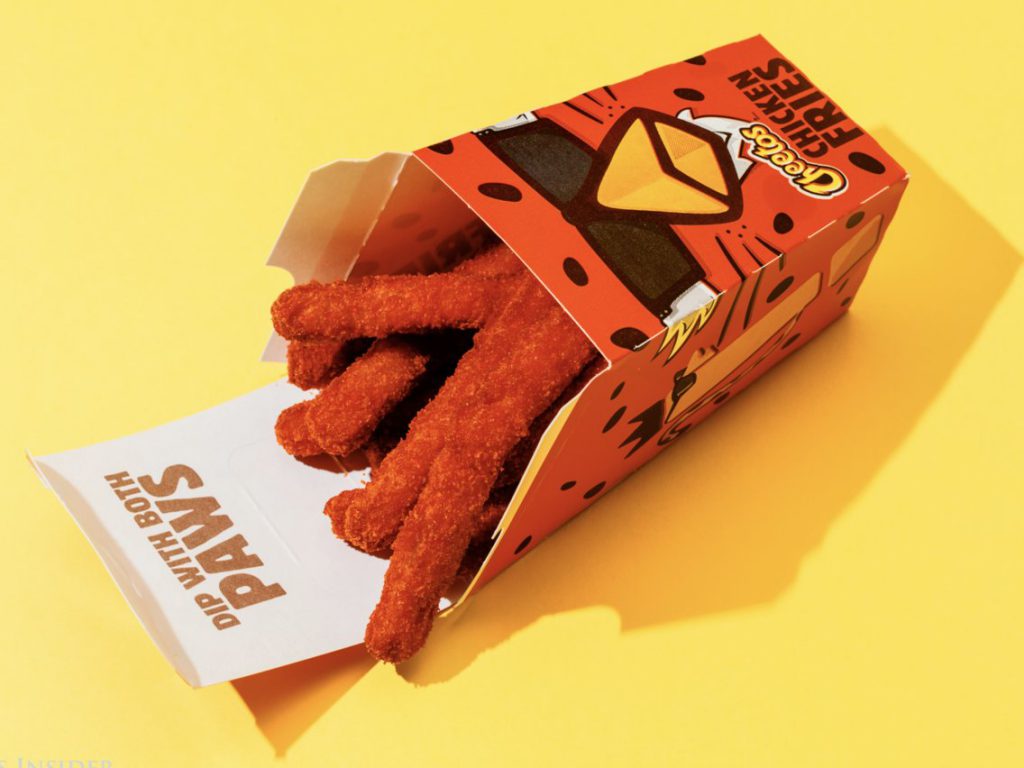
Taylor: Was there any one ad campaign or one product innovation where you realized, “Okay, we’re headed in the right direction?”
Cil: One of probably the biggest moments in the business from a shift-in-mindset standpoint was when we re-launched the chicken fries. It was a great example of our team mining social media and connecting with our younger guests. We have a very loyal following of millions of guests, and they were demanding chicken fries.
They had taken it off the menu in 2009. One of our young LDPs— they’re trainees, essentially, coming from the undergrad program — came forward and said, “Listen, I’ve been reading the social media data and people are asking for this thing called chicken fries.” We didn’t have them on the menu. He did research and suggested to us, to our leadership team for the US business, “Guys we need to move forward with these chicken fries. It looks pretty big.”
We did more research. We did some focus-group testing. We developed a product, innovated on the product, on the packaging as well, tested it, and saw that it was going to resonate well, and we launched it. It had a real big impact. We launched it through social media, only through digital.
Taylor: I remember that launch. It was one of the first fast-food stories I wrote.
Cil: My kids are now 22 and 18 and this was probably five years ago, four and a half years ago. They were like, “Dad, everyone’s talking about it. This is really big and you need to keep pushing for it.” It’s been a big part of the business plan for us.
Taylor: What lessons did you draw from that and apply to the strategy going forward?
Cil: I think the key lesson was that everything starts with understanding what the guest wants. We’re trying to grow the business from a top-line standpoint, so in existing stores we’re trying to grow the business and we’re trying to build more restaurants to make all three brands more accessible to our guests. But, you need to listen to the guest.
When you get too internalized and too focused on strategies that don’t pay attention to what the guests are looking for, you see companies and brands lose focus. Our learning from that exercise was that we need to start everything we do thinking about the guest.
We have two principles that we apply to everything we do. We start by trying to understand what the guests are looking for and focusing on delivering a great experience to the guest. Then secondarily we look at the franchise profitability. If we have happy guests and profitable franchisees, the model and the business works really well.
‘Three iconic amazing brands’
Taylor: When you’re thinking about the guest that you’re targeting — is that different between the brands?
Cil: We run the brands very differently and separately. There are three iconic amazing brands. They started differently. The heritage is different, the legacy of each brand is different. We have really strong marketing teams and insights teams at each of the brands that focus intently on what it is that the guests are looking for for that brand.
It’s not just for the brand. It’s also by country and by area in which we operate. We’re in 100-plus countries and territories for Burger King. We’re expanding rapidly with Popeyes in the US. We’re growing in Canada. We’re growing in Latin America, and in some markets in Europe. We’re growing aggressively in Asia as well. With Tim Hortons we’ve just started in China. We started in Mexico, in Spain, in the UK, Philippines. These are markets and brands that have different perspectives for different markets all around the globe.
One of the big things we’ve seen with the three brands is the needs or the services that the guests are asking for from a technology standpoint. Loyalty is a big opportunity for Tim Horton’s in Canada. We just launched our loyalty program for Canada. It’s a much more comprehensive loyalty program that recognizes and rewards the guests that are coming to Tim’s day in and day out. We have some folks that come in multiple times a day and so this was highly anticipated and well received loyalty program.
At Burger King we’ve seen more opportunity from a mobile app standpoint so we’re developing campaigns and more direct marketing through all the data that we’re gathering for guests at Burger King, in the US and beyond. Delivery is also big for BK.
For Popeyes we see delivery as being a big part of the growth in the US and other markets around the globe. We’re very targeted and brand-specific in terms of our marketing plans and our guest segmentation.
Taylor: What is it that makes Popeyes most appealing for delivery?
Cil: I think the product travels extremely well. It also lends itself to bigger groups. It’s a great catering opportunity. If you have a big party at the house, or if you’re having friends over late at night, it lends itself to a big group of folks coming and grabbing it. We also have individual combos that you can order if everyone wants to have something different. We’re building and innovating the packaging to be able to do more things with our side items and beverages.
Taylor: How big of a part of the business can delivery be?
Cil: I think it’s in the beginning stages now, so there’s no real limit. I think we’re just beginning to learn how to communicate to guests about our delivery business and build combos and family bundles for guests.
Whopper Detours

Taylor: The Whopper Detour was a really interesting way to get people to think about downloading Burger King app. Can you just give me a little bit more info on that?
Cil: The idea behind the campaign was to introduce folks to the app. We hired a bunch of really, really talented engineers over the last 18 months to help us build up our technical and technology capabilities. They’re working with all three brands with BK, Popeyes, and Tim’s.
They built a really good app. It’s simple, easy to use, visually very appealing. It had mobile order and pay, plus other features that were really great, very unique, and bespoke couponing so it was really cool. The idea behind the campaign was to have them download the app near one of our main competitors — I never mention them by name — go to one of their locations using the geo fencing technology that they had in the restaurants.
Once the app was close enough and you had downloaded it, it would invite you to try a Whopper for a penny. That’s where the detour came in. You’d have to leave the restaurant of the competitor and go to a nearby Burger King which is, in some cases a half a mile away. We had about a million and a half downloads.
It was a significant uptick in the number of downloads we had, but the downloads also led to more active users. Having active, engaged users is really the objective here. We want people not just to download it and ignore it, but download it and use it regularly.
Winning over Tim Hortons
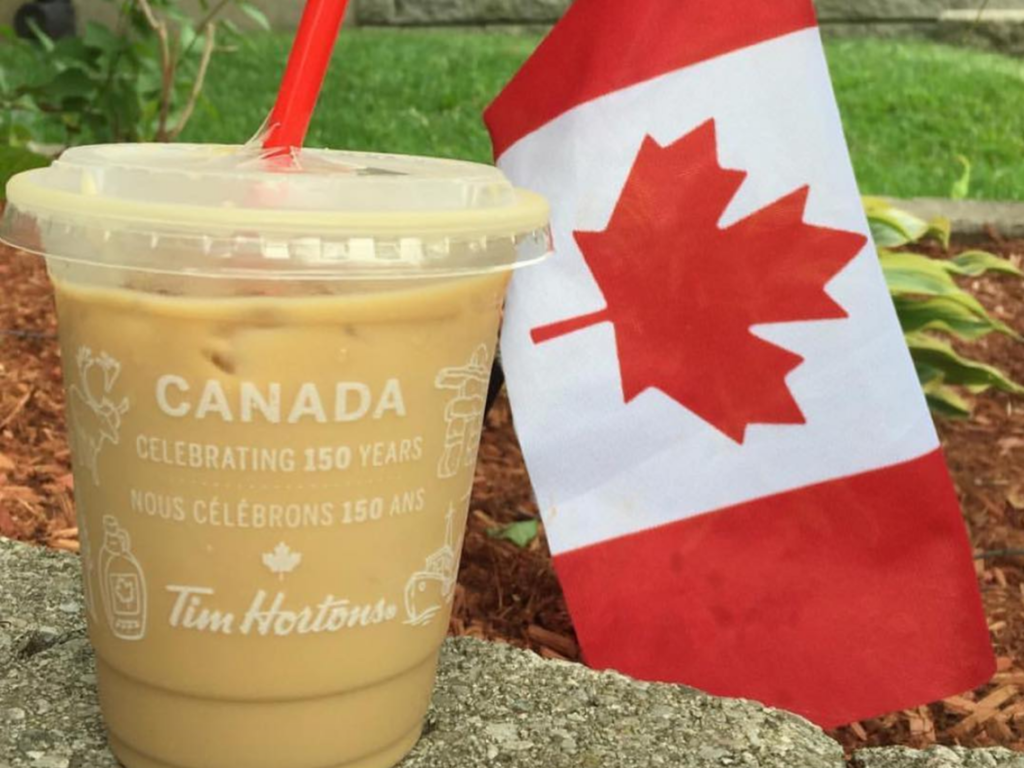
Taylor: Tim Hortons has such a cult following. How do you establish credibility with Canadians who have such strong feelings about Tim Hortons?
Cil: I think it always starts with having a great team. We’ve worked with the Tim’s brand now since 2014, beginning of 2015. I think it’s more than a cult brand. I think it’s one of the most amazing brands that exist anywhere in the world. There’s no brand anywhere in the world that has the penetration, the frequency, and visitation that Tim’s has.
Cil: I think it always starts with having a great team. We’ve worked with the Tim’s brand now since 2014, beginning of 2015. I think it’s more than a cult brand. I think it’s one of the most amazing brands that exist anywhere in the world. There’s no brand anywhere in the world that has the penetration, the frequency, and visitation that Tim’s has.
I think cults tend to be kind of niche. This is not niche. This is mainstream. People from all around the world that are Canadian, when they go home, before they go visit their mom, they go to Tim Hortons and they pick up Timbits. They pick up coffee. Then they go see their mom. It’s that big.
I lived in Europe for a long time. I have friends that were Canadian in both Spain and in Switzerland and that’s all they talked about. I became really popular with my Canadian friends in 2014 when we acquired Tim Hortons because it’s an icon more so than a cult.
I think what we’ve learned since the time of the acquisition is it’s really important to have a great team, really important to have a great plan, to kind of understand the brand, understand the opportunities, understand what progress we need to make and what are the essence and positioning of the brand that resonates well with the guests. We’ve built a team and a plan that’s, I think, quite strong.
I think most important is to do that in partnership with our restaurant owners. I’ve been working in the franchising business for nearly 20 years, and it’s the same in all brands and all territories. You need to have a really strong team with a good plan and you have to work well with your franchise partners because they’re the ones that invest. They’re the ones that run the restaurants. They’re the ones that deliver the brand promise everyday at the restaurants, and so they need to be part of the decision-making process, and they need to be able to share their viewpoints on what it is that we’re going to do with the brand.
We have really strong advisory counsels for each of the brands in the home markets that partner with us. We share with them any plans that we’re going to be doing from a marketing standpoint, a product innovation standpoint. We want their viewpoints and experiences so we can make the best decisions for the brand.
Taylor: Because Tim Hortons is so Canadian in its nature, what kind of image are you putting out for other countries when you’re thinking about international expansion?
Cils: We’ve seen, when we launched in Mexico, in the UK, Spain, and Philippines, and now more recently in China — the Canadian-ness of the brand resonates very well globally.
Everyone understands what Canada is. I think they have a ton of respect and admiration for Canadians, the way they are, the way they behave. They’re very warm, inviting people, and I think those qualities resonate globally.
When we launched in China, the core coffee offering does really well. We did some innovation on teas, so we expanded the variety of tea offerings there to make sure it connects well with that part of the population. But, the coffee offering does really well everywhere.
What we worked on to become more local is the food offering. Food is a more local preference, especially for baked goods and for breakfast items. In China for example, when we launched we had the cold shrimp ciabatta sandwich. Not something we’re thinking about bringing to the US just yet, but very cool, and something that we learned from research. It wasn’t someone who just sat in a conference room and made it up. That’s something that was a popular item in the marketplace.
The other thing is we took Timbits and we put a salted egg yolk Timbit — which is a flavor that they enjoy in China. We do very local offerings, but also kind of the base of the offering is very much a Tim’s offering and it’s working well.
Breakfast wars
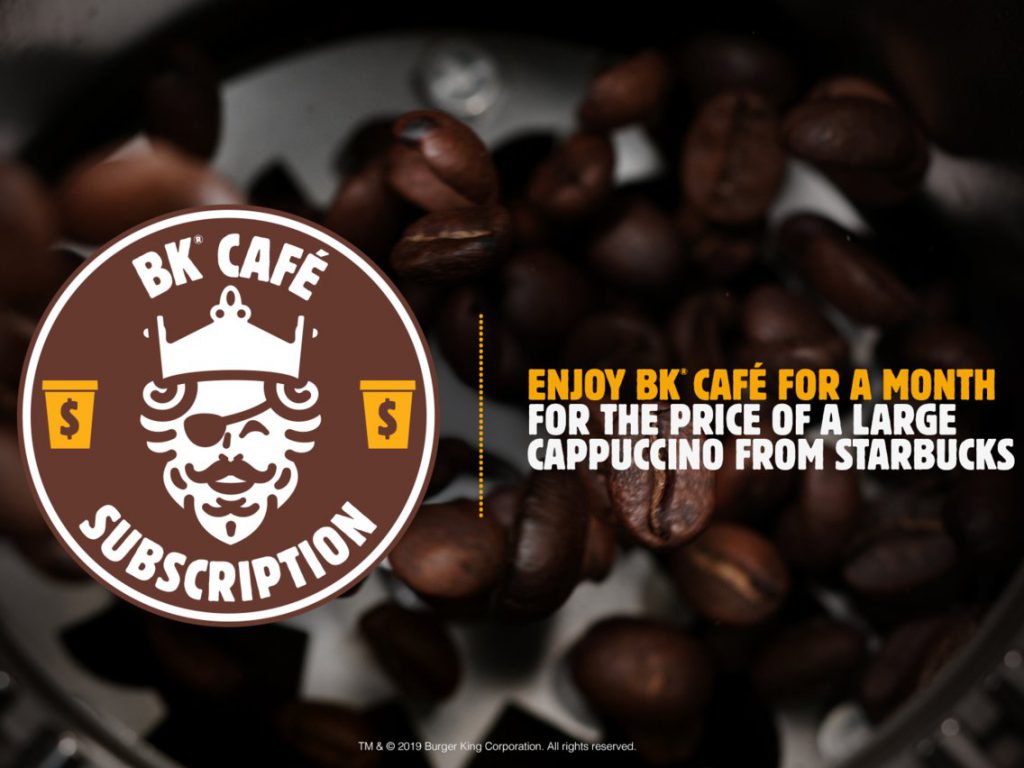
Taylor: Focusing on the US breakfast business right now, what are you trying to achieve?
Cil: Breakfast is an increasingly growing day part in our business. It’s one of the fastest growing day parts for the US and Canada. It’s very behavior-driven. Think about how you enjoy breakfast. You have your routines. You have the things you enjoy.
With Burger King, we already have a pretty good, sizable breakfast business, but we think there’s a massive opportunity for growth for years to come. It’s what led us to introduce very recently our BK Café which is a pretty … extensive overhaul of the coffee business. We have with new packaging, with a new name. We’ve introduced the product with a $5 subscription. For five bucks for the month you can enjoy coffee every day. It’s all for the price of a latte at one of the other coffee players in the US.
The idea was to re-introduce folks to Burger King as a really good option for breakfast. They can have a coffee at a good price, but also try some of the great products that we have for breakfast, such as the croissant, which is kind of a mainstay of the breakfast offering for a long time. It’s our top-selling item for breakfast.
Our hash browns, which are more like tots than they are like others might do them and they’re really good. We innovated on those. We’ve had cheesy tots in the past which is a really innovative and exciting product.
The idea is to bring news to the platform, but it’s not a stunt. It’s the beginning of us engaging with our guests and folks that haven’t tried Burger King for breakfast.
The other thing that’s important when you’re building a breakfast business is you need to work really closely with your franchise partners because it’s all about service and execution during breakfast.
Think about your breakfast experience. You’re working your way towards work and so time is very important, so we need to serve people quickly. The food needs to be hot and fresh. Having the franchise partners working closely with us is a big positive there.
Tim Hortons is one of those places where we’ve seen and learned how to run that business well. They do a great job in Canada, and in the US as well with the coffee. They serve hundreds and hundreds of coffees during breakfast through drive-thrus and the front counter.
Taylor: Why do you think that breakfast is growing so much as a day part right now?
Cil: I think the consuming public is shifting their habits a bit, and they’re spending more time eating out of home for breakfast.
Acquisitions
Taylor: What’s RBI’s strategy on thinking about acquiring more brands?
Cil: We’ve got three amazing, iconic brands. They’re in kind of different stages of the journey. All three of them have huge potential for growth here in the home markets and internationally.
We want to build the most loved restaurant brand in the world. That’s the dream. That’s a pretty ambitious goal for the organization. That’s where everybody’s focused on.
If opportunities arise, we’ll look at them as the opportunities come by, but the focus is on running our great brands and growing them all around the world.
Taylor: Are there any things that would draw you guys to a certain brand in general?
Cil: Like I said, we’re focusing on what we have in front of us. What’s good or great about our business model is that we’re growing. We’re growing in terms of system-wide sales. We’re generating more cash flow. That gives you a lot of flexibility to do different things.
We announced last year that we’re reinvesting in our distribution system in Canada, so 100 million CAD that we’re investing into distribution to improve the quality, freshness of our products as they’re delivered to restaurants and again providing better service to our franchisees.
We’re investing in remodels in Canada. We’re investing in remodels in the US. Generating cash allows us to do things like that.
It allows us to invest in people. We’ve invested in our technology team. We’ve invested in our marketing team. Our marketing teams at Burger King, for example, have won I think 94 Cannes Lions awards for creative advertising.
It also allows us to de-lever. In January that we announced a dividend increase of just about 11%, which is well-received from the investor community.
War for talent

Taylor: So many people I’m talking to right now are talking about how tight the labor market is. How do you deal with that, especially in the US?
Cil: Our franchisees are the ones that make the decisions and interact day-to-day with team members in the restaurants, and they do a really good job of spending time, energy. I think it’s all about having pride in the brands, having a great working environment. When our franchisees do that well which they do, you tend to see really strong affinity to the brand from a team member standpoint, and that helps us have have great team members in our restaurants.
Taylor: With a tight labor market and rising minimum wages, does that create issues with the business?
Cil: I’ve been in this business a long time, and we have franchisees that have been around for 50 years with our different brands. You’ll see over time ups and downs in terms of the commodity market, so you’ll see food cost go up and down depending on different situations. The same has happened with the labor market. The focus on driving profitability is always on the top line.
The focus, especially when things are tough, is to keep your eye on the guest, deliver great guest experiences, and when that happens you’ll see that more of them will come. It will drive sales, profitability grows. We’ve seen in 2018 a growth in profitability for Burger King, for Tim’s in Canada, and we’re kind of flat, slightly negative for Popeyes, but with really healthy returns on investment on all fronts for the three brands.
Taylor: How do you think about automation?
Cil: In the office and at the corporate level, we see technology and AI helping quite a bit on how we analyze big data. There’s a lot of data points in the business that we look at to get a better understanding of how guests are interacting with the brand and what’s working, what’s not working. We’re seeing more and more of the automation and AI helping us digest all that information. There is a lot of technology that we’re investing in for the guest experience side of things that I’ve touched on already, and the back of house as well.
In the kitchen, we’re seeing that there’s big opportunities for innovation and technology to help us with production management, with scheduling and these sorts of things. We think there’s opportunities there. But we’re always exploring ways to be more efficient and more effective, always focused on making sure that it aims at delivering better experience to our guests.
Taylor: Is automation something that can be used to cut down on labor costs?
Cil: I think our focus is making sure that we have people in the restaurants ready to serve guests.
To the extent that there’s potential for automation in some areas, we’ve seen in some of our cooking equipment we’ve been able to automate loading, for example, of products into the broiler, and other things that helped us be more efficient. But our focus is making sure we deliver a great guest experience.
I think if you tend to focus on cutting cost, you end up cutting sales, and that’s not what we want to do. We don’t spend any of our energy on cutting cost. We spend all of our energy on trying to find ways to grow the top line through delivering better guest experiences in the restaurants.
2019 goals
Taylor: Going into 2019, what are the biggest opportunities that you want to focus on?
Cil: What’s exciting about this opportunity that I just walked into is that I know it really well. I’ve been doing this for quite some time and I’ve been working closely with the RBI leadership team since 2011, since before it became RBI.
The plans that we built, the plans that we’re working on have been plans that I’ve been involved in developing since the beginning. I’m excited. I wake up before the alarm. I don’t sleep too much to begin with so I don’t lose too much sleep, but what I am most anxious about is making sure that the organization, our team, our franchise partners all understand what our plan is, are aligned with that plan and are working really hard, and are excited to achieve that, the big ambition that we have for the company.
Taylor: What are the biggest challenges that you want to take on?
Cil: It’s really just making sure everyone understands what it is we’re trying to accomplish and is aligned with this idea of building three great brands across the globe. Each one of them is in a different stage of its journey, but all three of them have huge potential for growth in their home markets as well as internationally. What can happen at times is that you get distracted by trying to do too many different things.
A kiosk-filled future
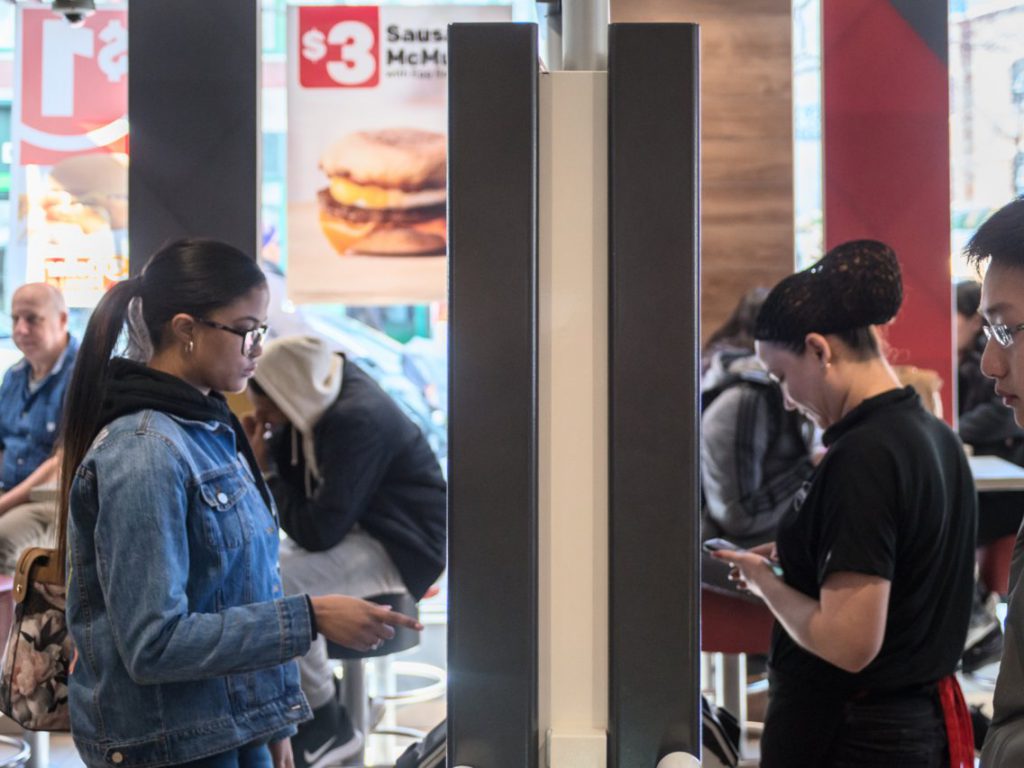
Taylor: What do you think about the business today would have surprised you the most from when you started from the bottom at Burger King?
Cil: In 30 years the business has been relatively the same. I think if you go back 35, 40 years, the biggest innovation in quick-service restaurants up until recently was the drive-thru. The drive-thru came in a long time ago, in the late ’70s, early 80s.
The last four or five years with the advent of digital delivery and how fast it’s growing, how guests are interacting with brands through digital platforms whether it’s mobile apps, or kiosks in the restaurants, or delivery, or online, I think that’s the most exciting part of the business.
It’s why we’ve spent a bunch of time over the last 18 months going out and recruiting and hiring really talented folks, engineers that come from big tech companies to help us build the type of tech team that can be on the cutting edge. I think that’s a massive opportunity and it’s a massive change that’s happened in the last many years.
Taylor: Thinking about kiosks — is that something customers want?
Cil: We have markets in Europe that do more than half of their transactions through kiosks. I think the hardware could evolve and probably will evolve, but the idea of a kiosk is similar to a mobile app. Basically the same technology. I think people enjoy the transaction, once they get used to it.
Think about when you used to go to the airports and you’d have to check in. At the beginning they’d have a host that would steer you to the kiosk and you hated to do it. Now nobody goes to the front counters. Everybody goes to the kiosk or does their boarding pass online.
It’ll be the same thing in our business, because it gives you more time to think through what you want to order. It gives you time to study the menu better. It gives you time to add on if you want to or consider desserts. In general we see higher check average on kiosks, so people tend to add more to it. They tend to specialize or customize their products a little bit more often as well. They try different things because they see it better and they don’t tend to be as rushed.
I think the hardware is evolving quite a bit as well, but we think it’s an important bit of technology that we’re going to continue to enhance on and include in our development strategy as well as our remodel strategy.
Taylor: If we’re talking in five years, what do you think the topics are we’re going to be talking about? What will be different? What will be the same?
Cil: I think what’s going to be the same is you’re going to make a choice where you go to eat based on the quality of the food. The quality of the ingredients I think is really important, as well as how transparent the brand is and how comfortable you are in terms of understanding exactly what you’re eating. I think that’s more and more important today and I think it’ll continue to be important over time. The food is always the starting point. You’re not going to go to a restaurant to eat if it has a lot of cool things but the food’s not good.
I think the second piece is it has to be convenient and accessible. I think the third piece that’s always going to ring true is it has to be a good value for money. It doesn’t mean that it needs to be a discount. It just means that you need to feel that the experience and the food that you’re enjoying is worth the $5, $6, $7, $10 that you’re paying for it.
I think technology will continue to evolve. Delivery is going to be a big part of this for the long haul, and how delivery evolves over time is yet to come but we’re positioned well with a team that we have to make sure that we stay on the cutting edge.
The making of a menu item
Taylor: How can we expect to see menu prices change?
Cil: For all three brands we always look at having a balanced offering. In burgers, in chicken, and in coffee, we’re trying to be an everyday brand, for every occasion, for every guest. It is really important for us to have that mindset because people eat 25, 30 times a week, if you include snacks and late night. We’re trying to fight for every single one of those.
Taylor: Are you thinking more bundled deals, more kind of super low cost, or all of the above?
Cil: We do a lot of focus groups and a lot of testing so we’re developing great premium products. We just launched at Burger King the grilled chicken sandwich which is something that we felt was going to be a big driver of growth. I think we have really cool and exciting innovations on the BK side coming shortly which we can’t talk about.
Taylor: Without going into specifics, when you think about what makes a great new Burger King product that’s going to drive conversation, what are the elements?
Cil: We think about the segment of the population that we want to be able to go after. So, we do a lot of research and understand what’s happening from a trend standpoint, where we are in terms of the 18 to 24 year olds, the more the middle of the pack 30 year olds, and then beyond. We look at the different proteins, and so beef, chicken, fish, other offerings. We look at that, and then we look at occasions and how people are experiencing the brands within snacking or breakfast, occasions and day parts.
Then we work internally with our innovation teams, along with some of our supply partners, to see what products are out there. We make decisions on what looks like a viable option. Then we put that in test. We try to keep those tests under the radar so others don’t see it. Sometimes we put media behind it and then we’ll look at the results. We’ll look at the impact that it has on the business. Profitability is an important element of the decision-making.
We work with our franchisees to make sure that we understand operational feasibility and whether there’s any issues that we’re not considering, and then we launch it. We’re fast, but it is a process that we take seriously because we want to make sure that what we do is going to have an impact on the guest experience and an impact on the franchise profitability.
Taylor: How long does it usually takes for you to take a product from first idea to national market?
Cil: It depends. We’ve had some that have been more than a year and we’ve had some that have been less than three or four months.
In all cases we make decisions based on insights, analysis, and always with feedback of our franchise partners. We don’t want to do things that are rash, but we can be a quick decision maker.
BI PRIME
 Your Distribution Management Solutions
Your Distribution Management Solutions
